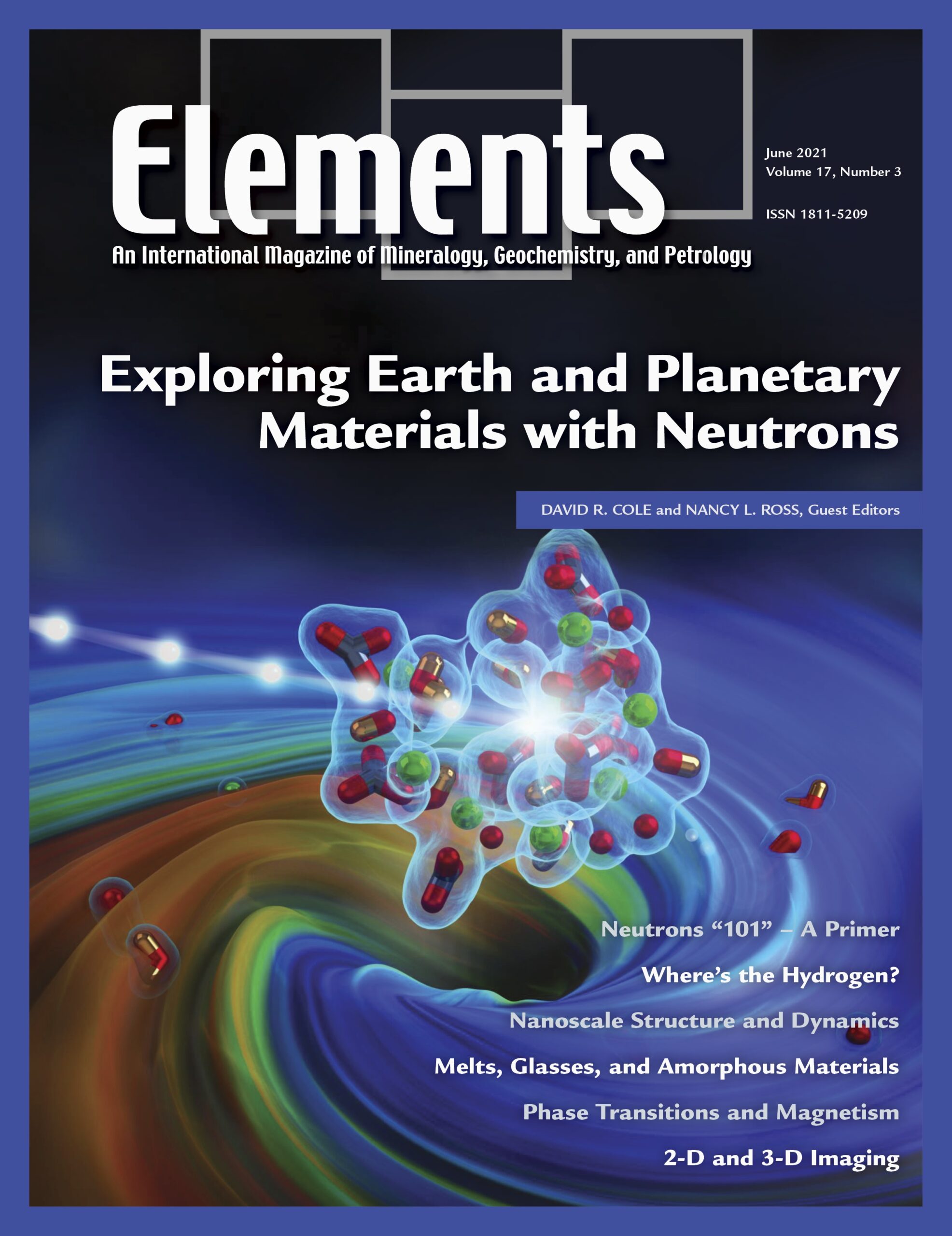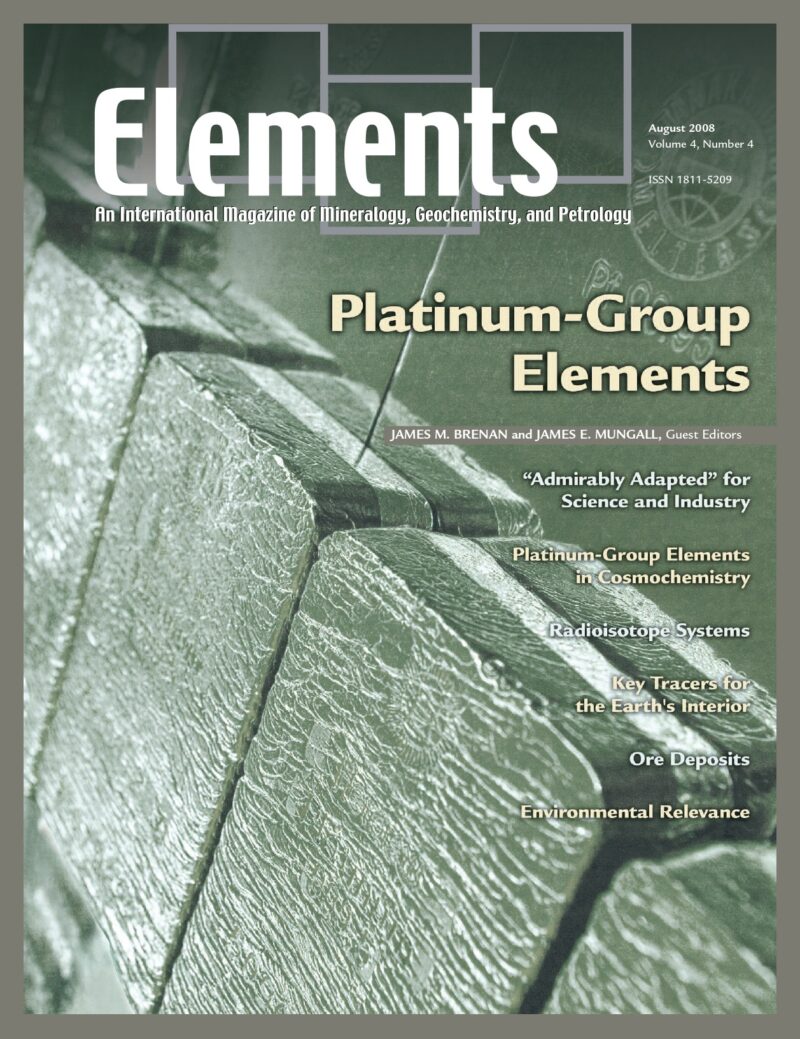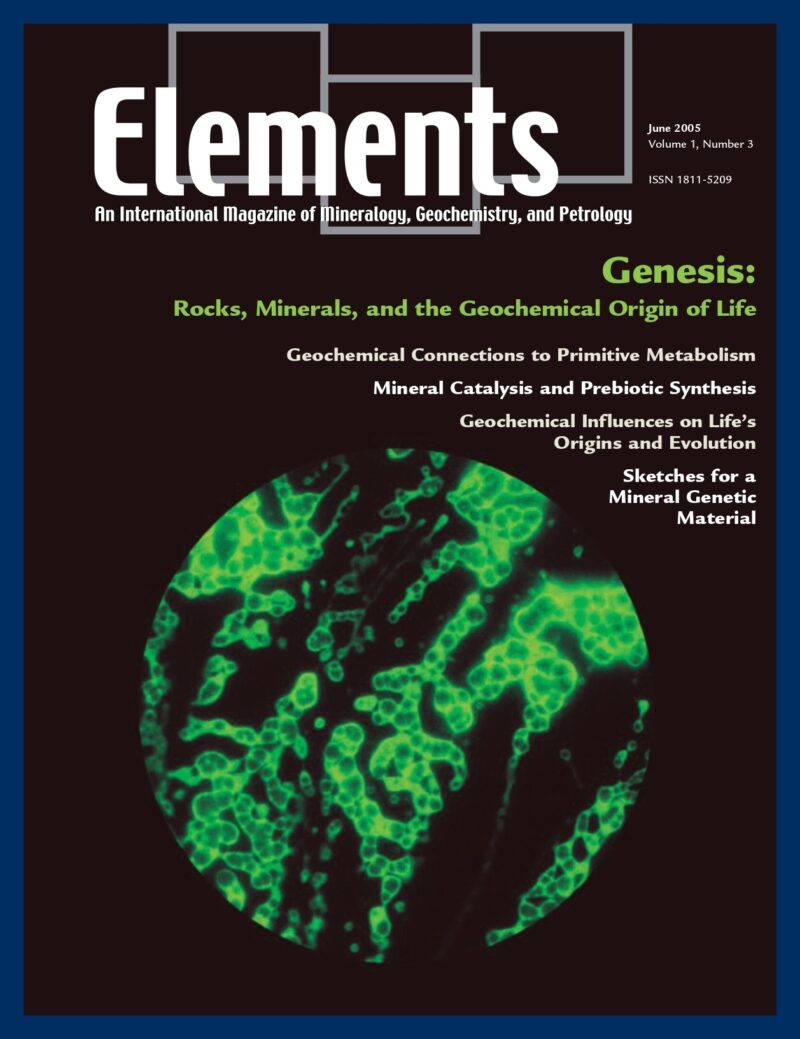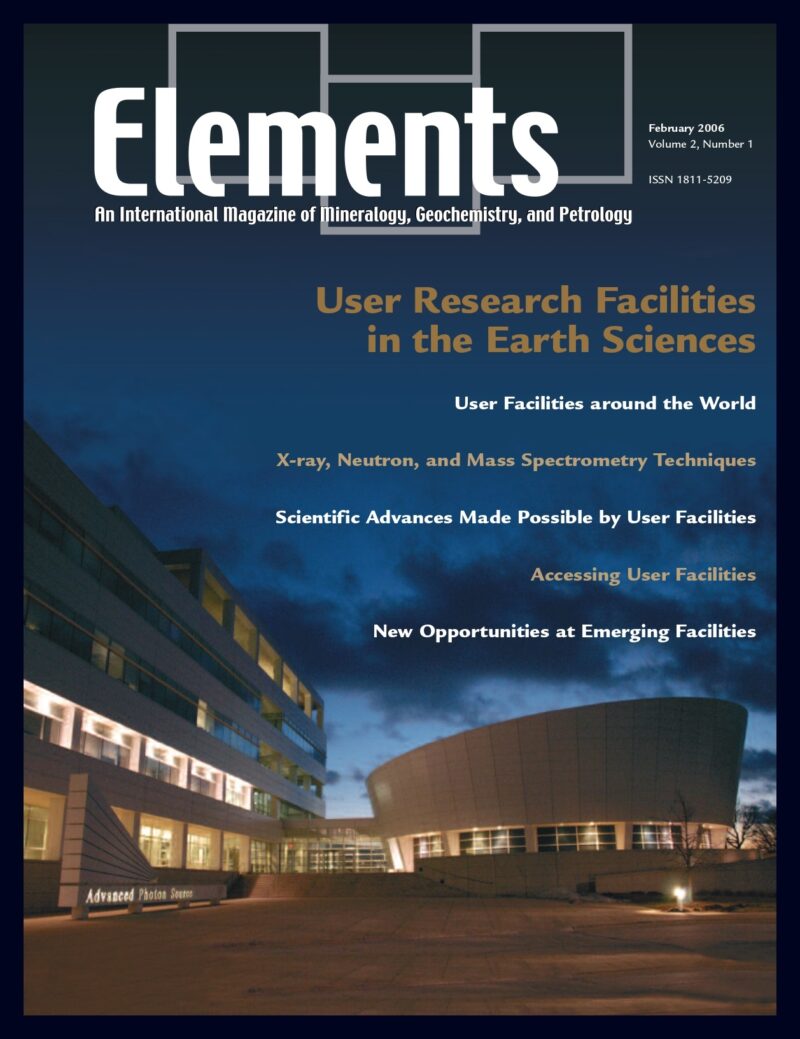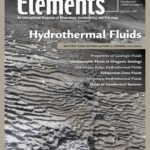
Hydrothermal Fluids, December 2020, Vol. 16, No. 6
June 28, 2024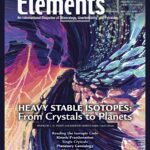
Heavy Stable Isotopes: From Crystals To Planets, December 2021, Vol. 17, No. 6
June 28, 2024Exploring Earth And Planetary Materials With Neutrons, June 2021, Vol. 17, No. 3
$20.00
For over half a century, the structural details and the dynamics of atomic arrangements in materials have been determined using neutron-based scattering and absorption measurements. Neutron scattering experiments have contributed valuable information on geological materials and how these interact with fluids.
Exploring Earth And Planetary Materials With Neutrons
June 2021, Vol. 17, No. 3
For over half a century, the structural details and the dynamics of atomic arrangements in materials have been determined using neutron-based scattering and absorption measurements. Neutron scattering experiments have contributed valuable information on geological materials and how these interact with fluids. In situ studies of transformations and fundamental properties can emulate diverse environments, from Earth’s surface to its deep interior. Potential growth of the “neutron community” is being realized with the development of new and improved neutron sources. This issue of Elements familiarizes the reader with the basic concepts of neutron scattering, the methods that are available to Earth scientists, provide a summary of facilities around the world, and give key applications of the technique.
Why You’ll Love Elements Magazine:
- Expert Contributors: Articles written by renowned researchers in the field of geoscience.
- Engaging Content: Join a community of readers who are passionate about Elements.
- Exceptional Quality: Each issue is printed on high-quality paper with stunning visuals and detailed illustrations that bring complex scientific concepts to life.
Order your copy of the June 2021 issue of Elements magazine today and delve into exploring Earth and planetary materials with neutrons.
Related products
-
Platinum-Group Elements, August 2008, Vol. 4, No. 4
$20.00The geoscientific and economic significance of the PGE is immense. Due to their extreme siderophile and chalcophile behaviour, the PGE are highly sensitive tracers of geological processes involving metal and sulfide phases.
-
Genesis: Rocks, Minerals, And The Geochemical Origin Of Life, June 2005, Vol. 1, No. 3
$20.00Few scientific questions so capture the public imagination, or provoke such lively debate, as how life on Earth emerged. In this issue of Elements, four of the most creative minds in origins research present their original insights on the geochemical origins of life.
-
User Research Facilities In The Earth Sciences, February 2006, Vol. 2, No. 1
$20.00Earth scientists rely on effective access to user research facilities that provide state-of-the-art analytical instrumentation. This thematic issue focuses on some of these facilities and how to use them.

